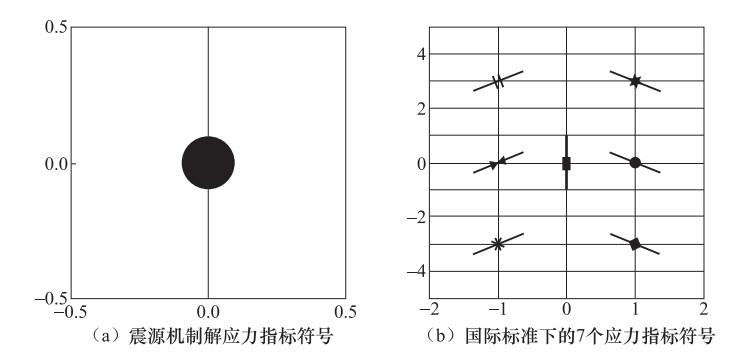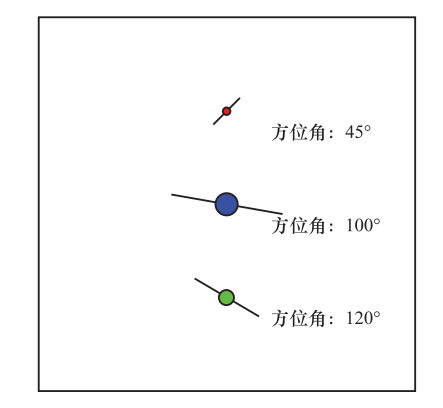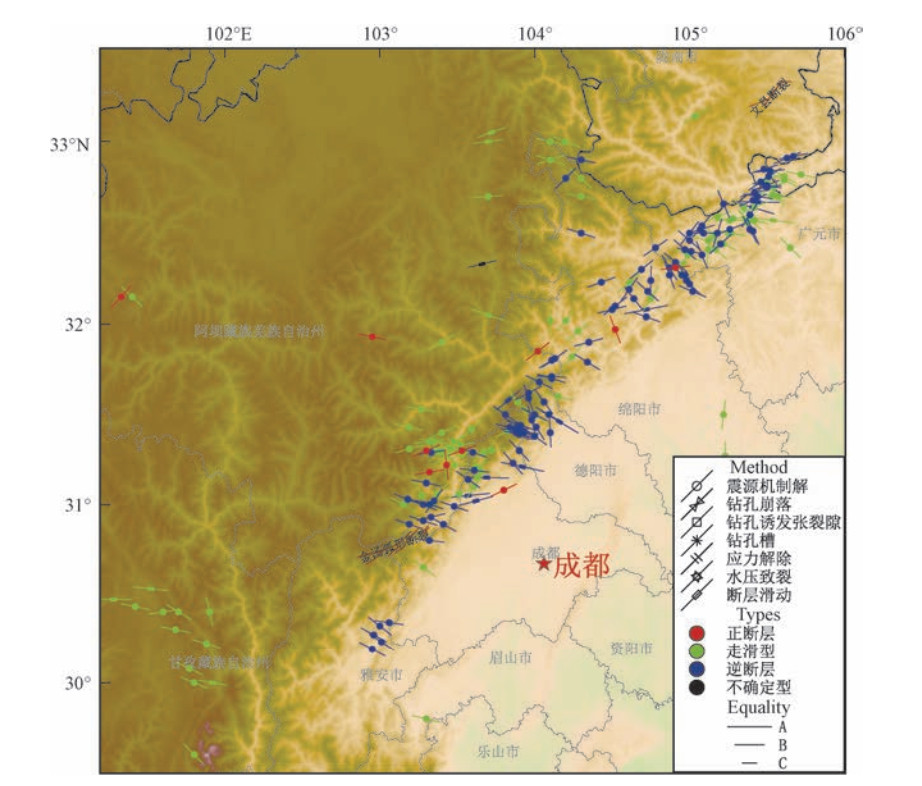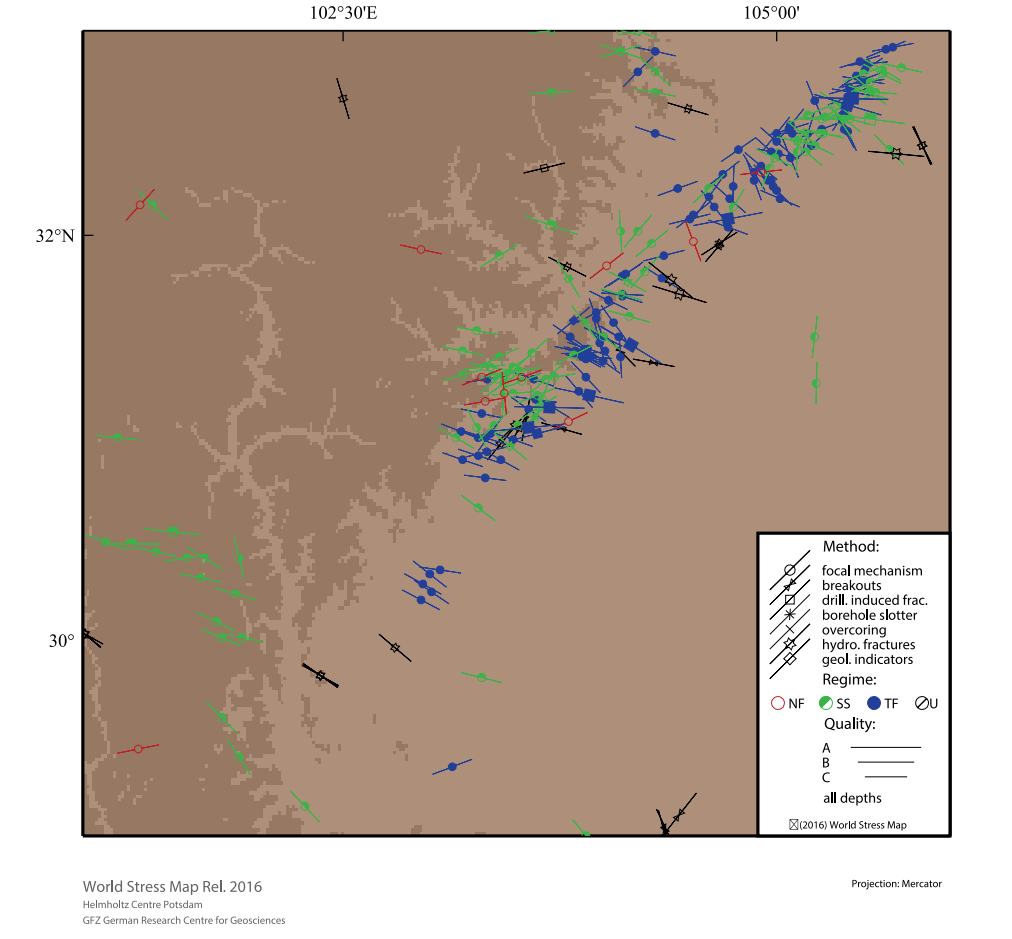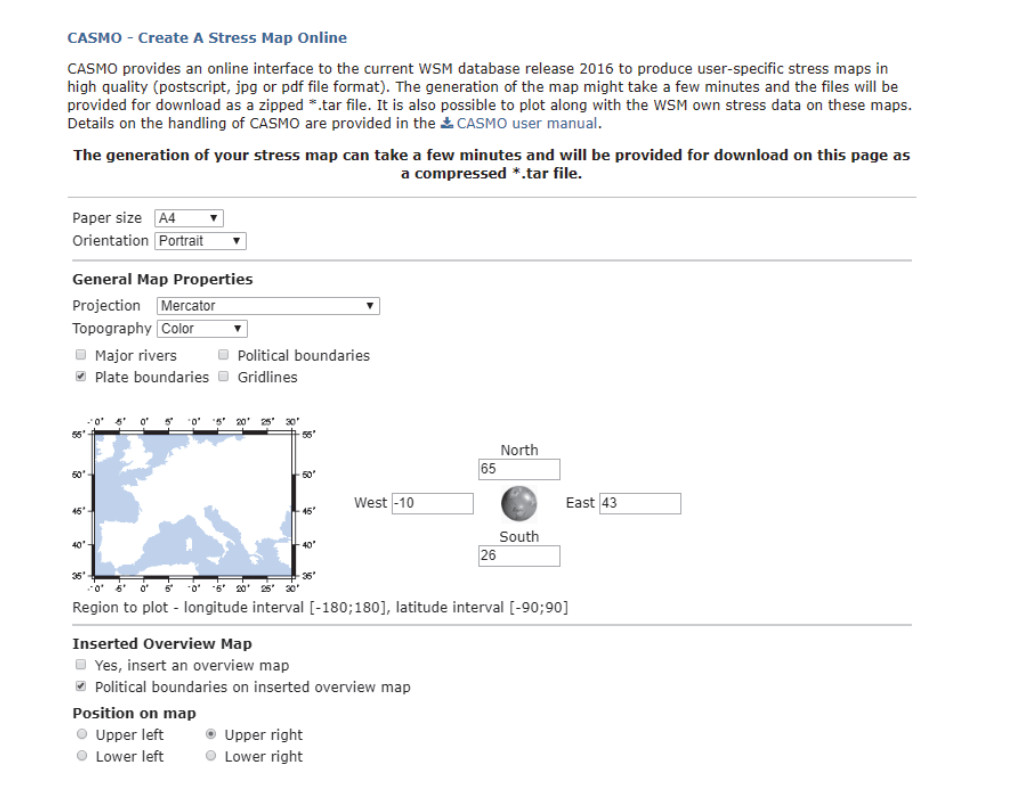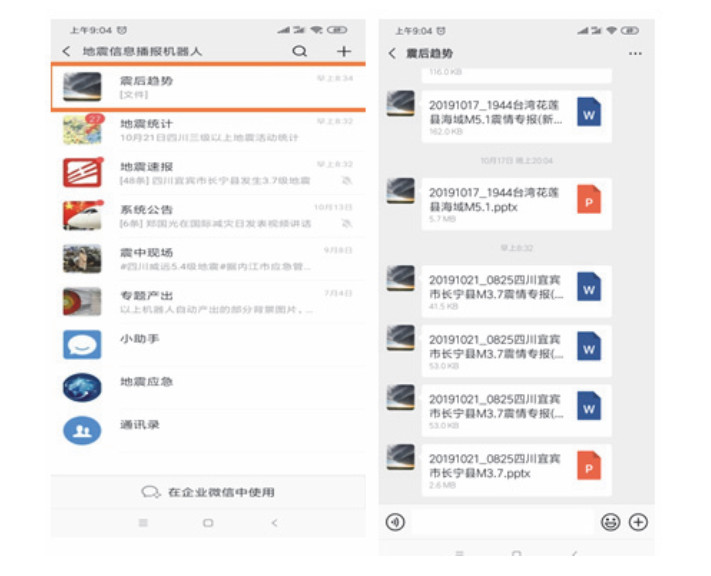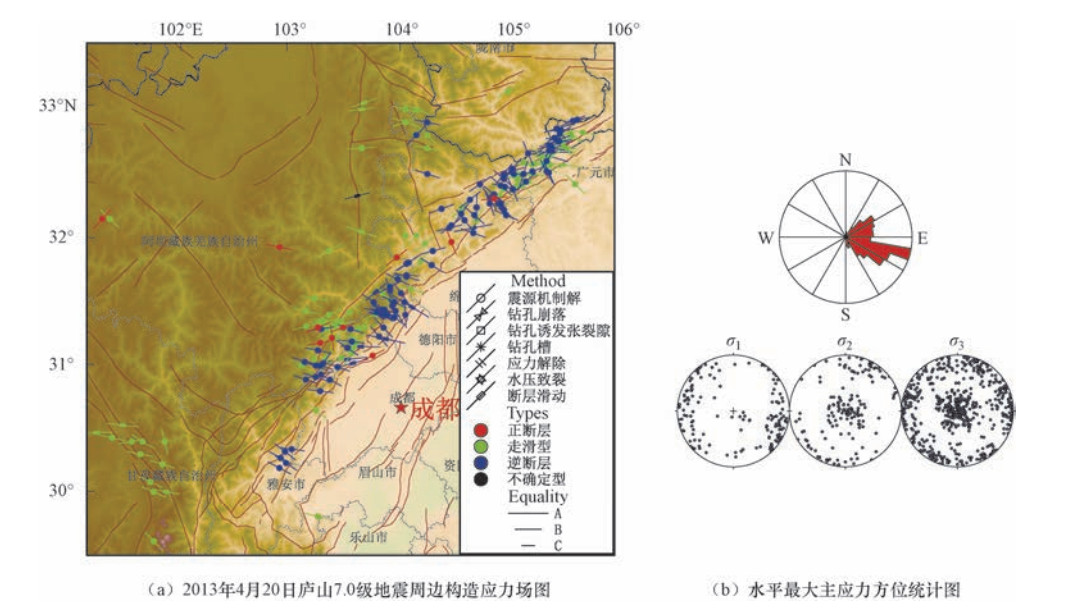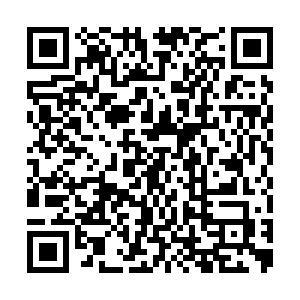Application of GMT in Seismological Emergency Technology Products——Drawing of Stress Field Map
-
摘要: 针对目前地应力符号绘制困难、地应力图加工与发布依赖于人工编辑等问题,提出使用GMT自定义符号技术设计符合地学界通用符号标准的应力符号,给出利用GMT绘制地应力图的整体流程,最终实现了地应力数据矢量和应力状态信息的准确表达,并帮助用户简化地应力图绘制程序、提高信息报送的时效性。以龙门山区域应力分布为例,多方位对比国内外制图方法。结果表明,使用GMT自定义符号技术设计的应力符号不仅简化了地应力图的绘制程序,且表达出的应力数据信息更丰富。该技术已应用于《震后趋势判定技术系统》中,并在地震趋势会商工作中发挥重要作用。Abstract: In view of the current difficulty of geo-stress symbol drawing, and the operation of geo-stress depends on manual editing, it is proposed to use the custom symbol technology of GMT to design stress symbols that meet the standards in the geosciences, and the whole process drawing stress map by GMT is given, and the accurate expression of stress data and stress regime information is realized. In this way, it helps users to simplify the procedures in drawing maps and improve the efficiency of information reporting. By studying the drawing of the stress distribution map of Longmen mountain area, we compare with domestic and foreign drawing methods in many ways. The results show that the stress symbols designed by custom symbol technology in this paper not only simplify the drawing process, but also enrich the stress data information. This paper has applied the results of the mapping to Post-earthquake trend determination technology system, which played an important role in seismic trend conference.
-
Key words:
- GMT software /
- Longmen mountain stress area /
- Custom symbol technology /
- Automatic output
-
表 1 自定义符号语言中可用的部分绘图命令
Table 1. Some drawing commands available in symbolic languages
名称 代码 目的 参数 旋转 R 旋转坐标系 ${\rm{ \mathsf{ α} [a]}}$ 圆形 c 画圆 $ \rm{x},\rm{y},\rm{size}$ 菱形 d 画菱形 $ \rm{x},\rm{y},\rm{size}$ 六边形 h 画六边形 $ \rm{x},\rm{y},\rm{size}$ 倒三角形 i 画倒三角形 $ \rm{x},\rm{y},\rm{size}$ 文字 l 添加文字 $ \rm{x},\rm{y},\rm{string}$ 绘制矩形 r 绘制矩形 $ \rm{x},\rm{y},\rm{windth},\rm{heigth}$ 正方形 s 绘制正方形 $ \rm{x},\rm{y},\rm{size}$ 正三角形 t 绘制正三角形 $ \rm{x},\rm{y},\rm{size}$ 十字架 x 绘制一个十字架 $ \rm{x},\rm{y},\rm{size}$ x轴上的线段 - 在x轴上绘制线段 $ \rm{x},\rm{y},\rm{size}$ y轴上的线段 y 在y轴上绘制线段 $ \rm{x},\rm{y},\rm{size}$ 表 2 应力数据
Table 2. Stress data
LAT LON TYPE REGIME S1AZ 32.500 104.3 FMS TS 108 C 31.500 104.0 FMS TF 116 C 31.155 103.7 BO TF 121 C … … … … … … 表 3 龙门山应力区断层类型统计
Table 3. Statistic of fault types in Longmen mountain stress area
项目 正断层 逆断层 走滑断层 不确定型 断层数目(条) 12 113 105 1 占总断层数目百分比(%) 5% 49% 45% 1% -
崔进业, 2018.龙门山断裂带地壳形变及应力特征研究.西安: 西安科技大学. 崔效锋, 姜波, 谢富仁, 2004.中国大陆地壳应力环境基础数据库及查询系统.大地测量与地球动力学, (4):107-112. http://www.wanfangdata.com.cn/details/detail.do?_type=perio&id=dkxbydz200404020 郝天平, 陆远忠, 崔效锋等, 2012.基于WebGIS的中国大陆地壳应力环境系统.地震工程与工程振动, 32(5):172-177. http://www.wanfangdata.com.cn/details/detail.do?_type=perio&id=dzgcygczd201205025 胡幸平, 2018.中国地壳应力模式跨尺度研究.合肥: 中国科学技术大学. 刘珠妹, 刘坚, 李盛乐等, 2018.基于可视化GMT的MapSIS制图子系统设计与实现.大地测量与地球动力学, 38(3): 326-330. http://www.wanfangdata.com.cn/details/detail.do?_type=perio&id=dkxbydz201803021 陆远忠, 李胜乐, 邓志辉等, 2000.基于GIS的地震分析预报系统.成都:成都地图出版社. 谢富仁, 陈群策, 崔效锋等, 2004.中国大陆地壳应力环境基础数据库.地壳构造与地壳应力文集, (S1):1-9. 徐锡伟, 韩竹军, 杨晓平等, 2016.中国及邻近地区地震构造图.北京:地震出版社. 张红艳, 2015.龙门山断裂带区域现代构造应力场与汶川MS8.0地震力学成因探讨.国际地震动态, (8):42-45. http://www.wanfangdata.com.cn/details/detail.do?_type=perio&id=gjdzdt201508009 张红艳, 谢富仁, 崔效锋, 2013.四川芦山地震区域构造环境与构造应力场特征.地球科学与环境学报, 35(2):99-106. http://www.wanfangdata.com.cn/details/detail.do?_type=perio&id=xagcxyxb201302011 占伟, 孟宪刚, 刘志广, 2010.GMT绘制GPS速度场的应用.华北地震科学, 28(3):61-64. http://www.wanfangdata.com.cn/details/detail.do?_type=perio&id=hbdzkx201003015 张永奇, 丁晓光, 韩晓飞, 2013.GMT软件在大地测量及地震成果表达中的应用.山西建筑, 39(6):205-207. http://www.wanfangdata.com.cn/details/detail.do?_type=perio&id=shanxjz201306107 Fischer T., Horálek J., Hrubcová P., et al., 2014. Intra-continental earthquake swarms in West-Bohemia and Vogtland: A review. Tectonophysics, 611: 1-27. Heidbach O., Rajabi M., Cui X. F., et al., 2018. The World Stress Map database release 2016: Crustal stress pattern across scales. Tectonophysics, 744: 484-498. Roth F., Fleckenstein P., 2001. Stress orientations found in North-East Germany differ from the West European trend. Terra Nova, 13(4): 289-296. Seredkina A., Melnikova V. L., 2018. Seismotectonic crustal strains of the mongol-baikal seismic belt from seismological data. Moment Tensor Solutions. Tingay M., Müller B., Reinecker J., et al., 2005. Understanding tectonic stress in the oil patch: The World Stress Map Project. The Leading Edge, 24(12): 1276-1282. Wessel P., Smith W. H. F., 1998. New, improved version of Generic Mapping Tools released. Eos, Transactions American Geophysical Union, 79(47): 579. http://www.wanfangdata.com.cn/details/detail.do?_type=perio&id=10.1029/98EO00426 Zoback M. L., 1992. First and second-order patterns of stress in the lithosphere: The World Stress Map Project. Journal of Geophysical Research: Solid Earth, 97(B8): 11703-11728. -



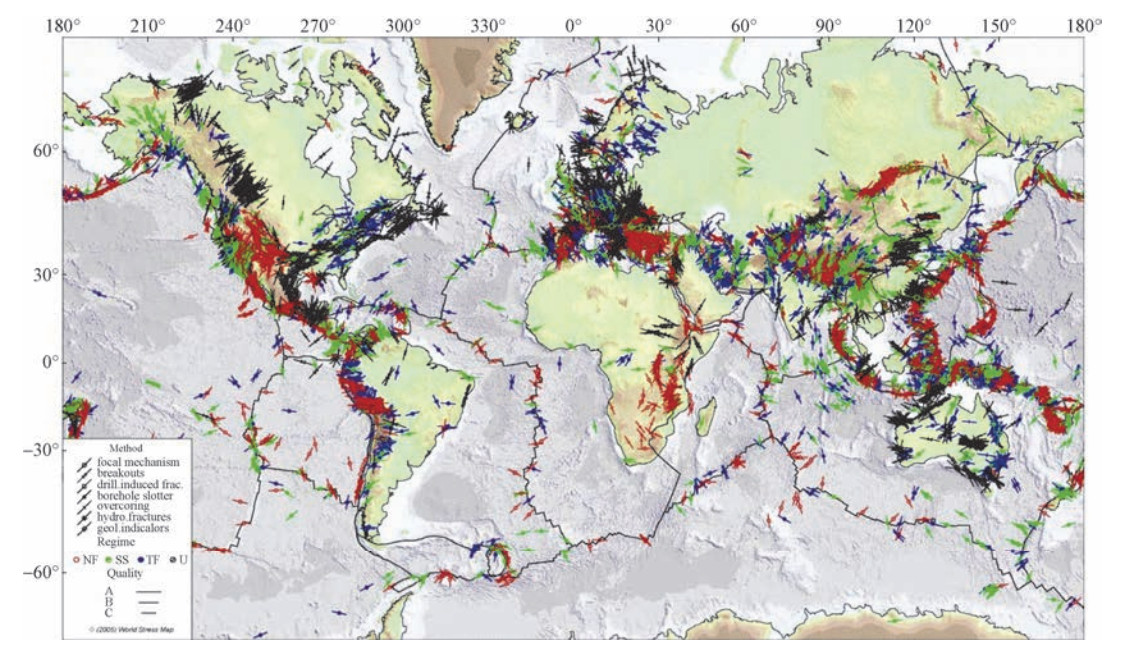
 下载:
下载:

